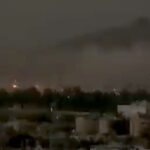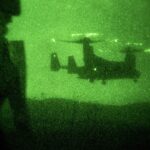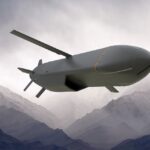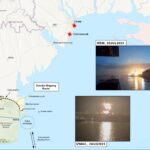The United States Space Force confirmed that two Russian “inspector” satellites have stalked a U.S. spy satellite in the low-Earth orbit (LEO), in the past weeks. The American satellite, known as “USA 245”, is one of the highly-secretive and advanced KH-11 Block IV geospatial intelligence spacecraft. Built by Lockheed Martin as part of the U.S. “Keyhole” program, the KH-11 uses a 2.4 diameter prime mirror, which enables ultrahigh-resolution of 15 cm (objects that are minimum this size can be seen on satellite photos). The KH-11 satellites are operated by National Reconnaissance Office.
A KH-11 satellite was likely the GEOINT platform that photographed Iran’s failed space launch in August 2019 (photo in the post). President Donald J. Trump later tweeted the photo. In addition to its high-end electro-optical digital imaging, KH-11 satellites can be tasked with certain ELINT missions.
The United States of America was not involved in the catastrophic accident during final launch preparations for the Safir SLV Launch at Semnan Launch Site One in Iran. I wish Iran best wishes and good luck in determining what happened at Site One. pic.twitter.com/z0iDj2L0Y3
— Donald J. Trump (@realDonaldTrump) August 30, 2019
COSMOS 2542 AND 2543
The Russians claim that their sensors, named “Cosmos 2542” and “Cosmos 2543” are in space to conduct maintenance inspections of other Russian satellites. However, Russia has been lying about its space operation ever since it placed the satellites into orbit on November 26, 2019. Initially, Moscow only announced Cosmos 2542 as being launched into space. But after two weeks of orbiting, Cosmos 2542 literally “birthed” a second, smaller satellite (Cosmos 2543). The two satellites then approached USA 245 instead of drifting away as Cosmos 2542 usually did.

A visual timeline of the Cosmos-2452 launch on November 25, 2019, via RussianSpaceWeb.com
UNUSUAL ORBITAL ACTIVITY
Between January 20 and 23, the Russian spacecraft essentially matched orbits with the American spy satellite. The distance between the Russian and American parties was fluctuating from 150 to 300 km. The Russian satellites traversed a clever orbit that allowed them to inspect the KH-11 from multiple angles while keeping the American satellite in sunlight for most of the time. This put the KH-11 in perfect light and distance for the Russian spacecraft to photograph the American satellite and in particular, its high-tech lenses.
Credits for the discovery and orbital activity analysis goes to geospatial expert @M_R_Thompson who’s close observation of the three spacecraft made it to OSINT circles since January.
Something to potentially watch: Cosmos 2542, a Russian inspection satellite, has recently synchronized its orbit with USA 245, an NRO KH11.
A thread: pic.twitter.com/LqvYiIYBMd— Michael Thompson (@M_R_Thomp) January 30, 2020
DIRECT/ SOFT KILL PRACTICE?
The unusual behavior of the two Russian satellites suggests that they were either attacking, simulating an attack, or collecting intelligence on the American spacecraft. Many agree that the Kremlin would have gained little from photographing the KH-11’s optics. This opens up the possibility that the Russian satellite duo was practicing an attack on USA 245. The simulated attack could have been either direct – donating near the target – or through soft-kill techniques. For example, the Russian satellites could have deployed low-energy lasers or chemical sprayers to blind USA 245’s camera lens and therefore render it useless. High-frequency microwaves or radiofrequency jammers could have also been used to disrupt the KH-11’s function.

Types of anti-satellite attacks via the Defense Intelligence Agency (DIA)
NEED FOR U.S. SPACE FORCE, BIGGER THAN EVER
Situations like this underline the importance of the newly established and independent U.S. Space Force. As opposed to Russia and China, the U.S. military is heavily dependent on the orbital “high-ground” to command, control and execute operations in case of war. With the threat of Chinese and Russian anti-satellite capabilities growing at a rapid pace, Washington took the U.S. Space Command from the Air Force and transformed it into a separate service. Given the plethora of American intelligence collection, communications, early warning, and missile defense satellites, the U.S will only benefit from having a platform dedicated to safeguarding these assets.
- Russia Bombs Maternity Ward & Children’s Hospital in Mariupol As Part of Siege - 10 March 2022
- T-Intell’s OSINT Training Marks One Year Anniversary - 18 November 2021
- IS-K Never Left the Battlefield - 27 August 2021








